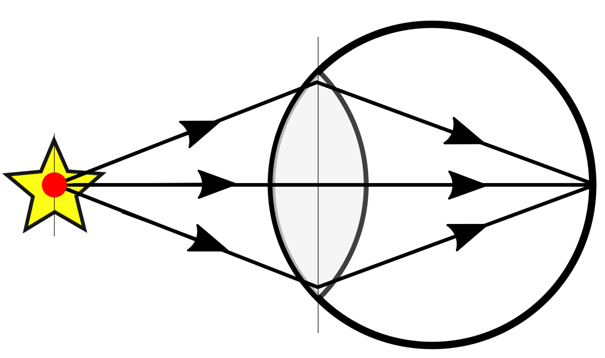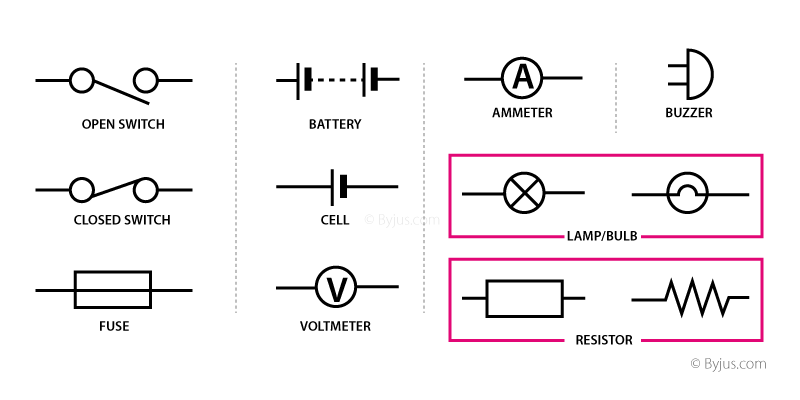PHYSICS BOOK CLASS(10th)
| Site: | Acetians Technologies |
| Course: | Acetians Technologies |
| Book: | PHYSICS BOOK CLASS(10th) |
| Printed by: | |
| Date: | Saturday, 26 April 2025, 9:11 AM |
Description

1. Light-Reflection and Refraction
What is Reflection of Light?
When a ray of light approaches a smooth polished surface and the light ray bounces back, it is called the reflection of light. The incident light ray which lands upon the surface is said to be reflected off the surface. The ray that bounces back is called the reflected ray. If a perpendicular were to be drawn on a reflecting surface, it would be called normal. The figure below shows the reflection of an incident beam on a plane mirror.
Here, the angle of incidence and angle of reflection are with respect to normal and the reflective surface.
Laws of Reflection
The laws of reflection determine the reflection of incident light rays on reflecting surfaces, like mirrors, smooth metal surfaces and clear water. Let’s consider a plane mirror as shown in the figure above. The law of reflection states that
- The incident ray, the reflected ray and the normal all lie in the same plane
- The angle of incidence = Angle of reflection
Types of Reflection of Light
Different types of reflection of light are briefly discussed below:
- Regular reflection is also known as specular reflection
- Diffused reflection
- Multiple reflection
Regular/ Specular Reflection
Specular Reflection refers to a clear and sharp reflection, like the ones you get in a mirror. A mirror is made of glass which is coated with a uniform layer of a highly reflective material such as powder. This reflective surface reflects almost all the light incident on it uniformly. There is not much variation in the angles of reflections between various points. This means that the haziness and the blurring are almost entirely eliminated.
Diffused Reflection
Multiple Reflection
A single image is formed when an object is placed in front of a mirror. What happens if we use two mirrors? Since reflective surfaces such as mirrors are very good at preserving the intensity of light in a reflection, a single source of light can be reflected multiple times. This multiple reflection is possible until the intensity of light becomes low until the point that we cannot see. This means that we can have almost infinite multiple reflections. We can also see an image at every individual reflection. This means that each image is the result of an image or an image of an image.
The number of images we see is dependent largely on the angle between the two mirrors. We see that as we go on decreasing the angle between the mirrors, the number of images goes on increasing. And when the angle becomes zero, i.e., when the mirrors become parallel to each other, the number of images becomes infinite. This effect can be easily observed when your barber uses another smaller mirror to show you the back of your head. When this happens, not only do you see the back of your head, you also see innumerable images of yourself. The variation of the number of images of an object placed between two mirrors with the angle between the mirrors can be described by a simple formula:
Reflective surface other than mirrors, in general, has a very rough finish. This may be due to wear and tear such as scratches and dents or dirt on the surface. Sometimes even the material of which the surface is made of matters. All this leads to a loss of both the brightness and the quality of the reflection.
In the case of such rough surfaces, the angle of reflection when compared between points is completely haphazard. For rough surfaces, the rays incident at slightly different points on the surface is reflected in completely different directions. This type of reflection is called diffused reflection and is what enables us to see non-shiny objects.
2. The Human Eye And The Colourful World
Human Eye
How do we see what we see? How do we perceive simple light rays as full-fledged images? Before getting into this, we should understand the important parts of a human eye and what their functions are.

The Cornea: Imagine this to be like a window to a human eye. The cornea contributes to major refraction of light (bending of light rays) entering our eyes. It forms the clear front surface of a human eye. It also makes sure that foreign substances do not enter the eye.
The Iris: This lies right behind the cornea. It controls the circular opening called the pupil (aperture). It functions as an automatic camera shutter, controlling the amount of light entering a human eye.
The Crystalline Lens: The lens further focuses the light rays entering our eyes. Again, we can compare this to how an autofocus lens functions in a camera. This is called the accommodating power of the eye. Depending on where the object lies, the lens tries to focus on that object.
The Vitreous Humor: This is a jelly-like substance that fills most of the inner chamber of the eye. IT helps the eye maintain its spherical nature. The light rays after passing through the opening, travel through the vitreous humor before striking the retina.
The Retina: It is a light-sensitive inner lining of the human eye. Ideally, light rays should focus on the retina, forming an image. It is the innermost lining of the inner tissue, which consists of the sclera and the choroid as well. When the light finally strikes the retina, an electric signal is sent to the brain (the visual cortex) via the optic nerve. The brain then processes the image and finally, we see what we see.
Obviously, there are other parts of a human eye with supporting functions like lubrication of the eye (tear formation) and muscles that allow eye movement. The eyelids play a very important role in protecting the eye from external damage. Apart from the optic nerves, there are other sensory nerves that relay information to the brain regarding pain and other abnormalities.
You now have a brief overview of how the human eye works.
3. Electricity
Electric Circuit
The electric circuits are closed-loop or path which forms a network of electrical components, where electrons are able to flow. This path is made using electrical wires and is powered by a source, like a battery. The start of the point from where the electrons start flowing is called the source whereas the point where electrons leave the electrical circuit is called the return. Let’s conduct a small experiment, you would need the following,
- Electric bulb
- Wire
- Electrical tape
- A battery
Connect the wires to the bulb and connect one end of the wire to the battery, notice what happens, there won’t be any change in the bulb, but when you connect the free wire to the battery and complete the circuit, you will notice that the bulb starts glowing, therefore the circuit must be completed in order for the current to flow.
An electrical circuit complete only when there is at least one closed loop from positive to the negative end. This is the simplest form of an electric circuit, the circuit found inside a television is more complicated and has different components.

You might have seen these danger signs on electric poles, transformers and sometimes even on some electrical equipment at home, it is to warn you about the dangers of electricity, and electricity, if not handled properly, could be lethal and can even cause deaths. Electric wires sockets and live wire should be properly insulated and kept away from the reach of children, the voltage in a small battery does not exceed more than 12 volts but the voltage in a transformer may reach up to 11000 volts.
Faulty electrical circuits because fire, for fires caused due to electrical failure use of water to extinguish must be avoided, there are special extinguishers for the same.
We have come to a conclusion that electric current flows only when there is a complete uninterrupted connection from a battery through different components back to the battery, any interruption will stop the flow of current
Electric batteries should also be handled carefully, never connect two terminals of the battery without a bulb or a load, because the chemicals inside the battery react so quickly that they generate an immense amount of energy, which can even cause them to burst.
Electric Circuit Symbols
Every component and product of the electric circuit contains a symbol. The symbols represent parts of the circuit in a circuit diagram. Beneath are the basic set of symbols that are present in a circuit diagram.

Simple Circuit
A simple circuit comprises the power source, conductors, switch, and load.
- Cell: It is the power source.
- Load: It is also termed as the resistor. It is a light bulb that lights when the circuit is turned on.
- Conductors: They are made of copper wires with no insulation. One end of the wire is connected the load to the power source and the other end of the wire connects the power source back to the load.
- Switch: It is a small gap in the circuit. There are various types of switches. A switch can be used to open or close a circuit.
Electric Circuit Formula
Following are the list of formulas that are used in electric circuits are:
| Quantity | Formula | Notations |
| Electric current |
| |
| Resistance |
| |
| Voltage |
| |
| Power |
| |
| Series circuit |
| |
| Parallel circuit |
|